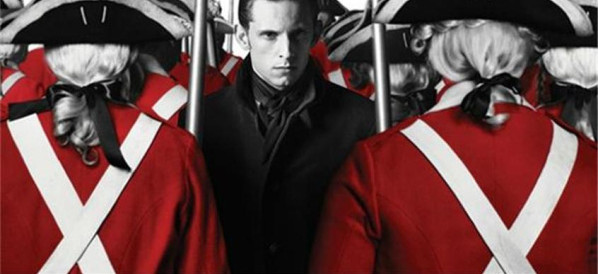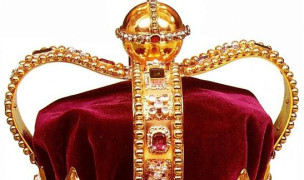 4 Terms
4 TermsHome > Terms > English (EN) > masculinity
masculinity
Many scholars, such as Gail Bederman and Michael Davitt Bell, have noted the ideological, aesthetic and performative variations and inconsistencies underscoring the cultural terms that define American manhood. At the same time, these and many other scholars (including George Chauncey E. Anthony Rotundo, Michael S. Kimmel) recognize a persistent historical anxiety that drives the vigorous activity of the masculine enterprise. As these scholars see it, the anxietyproducing agent that enables the historical concepts of masculinity is the perceived threat of cultural effeminization (see homophobia). The rise of the new woman at the turn of the nineteenth century and her entry into the industrial-age workforce triggered a considerable cause for worry. The rapid development of industrial capitalism spawned paradoxical response since, on the one hand, the industrial age promised a virile and efficient world. On the other hand, the very same notions of progress ushered in quite a few unmanly and thereby undesirable social elements. One might suggest that the hyper-virile antics of American men at this time (weightlifting, sport) served as an activity to contain cultural excess, i.e. the feminine. Thus, the discourse of cultural conditions was often framed along gender lines: “effeminacy” was the sweeping generalization assigned to the cause of any ill-effect attending modern society. Sloth, “neurasthenia,” homosexuality and other purported weaknesses observed in/ on the male body were paradigmatic dysfunctions directly related to the “effeminizing” of American culture.
American artists, statesmen and religious individuals took to the cause of mastering the cultural parameters of masculinity that were apparently put at risk by cultural and corporeal effeminization. Ironically, the rigor with which men engaged the physical and emotional reconfiguration of manhood was often demonstrated with comical if not cartoon-like effect. “Sandow the Strongman” in Edison’s film shorts (c. 1896) or the steel-like men that dominated the 1930s paintings of Thomas Hart Benton highlight the hyperbolic work involved with the presentation of virile American manhood.
Arguably, movies have been most instrumental in the shaping of an American consciousness of a masculine ideal during the twentieth century. Hollywood masculinity, however, is as varied as the cultural conditions that manufacture masculine identity Shifting between the likes of Sandow and Clark Gable, Errol Flynn and Fred Astaire, Sylvester Stallone and Arnold Schwarzenegger, Bruce Willis and Leonardo DiCaprio, Hollywood’s representation of masculinity allows multiple, conflictive readings.
One thing remains certain: if the terms of masculinity are varied and are established relative to the contemporary (and mobile) discourse of “femininity” the bête noir of culture is an uncontained effeminacy of masculinity that announces itself as homosexual.
It is no surprise, then, that some American men have practically made a career out of defending their perceived unmasculine dispositions as differential masculinity Politician Theodore Roosevelt’s aristocratic upbringing ushered in charges of dilletanti politics by not a few New York State assemblymen in 1882, who calculatingly called him an “Oscar Wilde”; dancer/choreographer Gene Kelly produced a television program in 1958 entitled Dancing, A Man’s Game to prove that ballet and baseball were really carved out of the same manly tradition; actor Kevin Spacey told the world that he intends to have children in hopes of refuting Esquire Magazine’s claims that he is gay The inability to define a true American masculinity cuts across issues of race as well (although the terms that define American manhood usually find themselves organized around white man’s Judaeo-Christian principles). Black men in particular have been viewed as threats and temptations by whites, while their masculinity has been shaped by economic, political and social repression. A contemporary example of the inter-section of these themes is the emergence of the Christian Conservative Men’s Movement, “The Promise Keepers.” Established in 1990, the group proudly embraces (and is embraced by) Asian American, African American. WASP and Latino men who bond under the auspices of Christian (masculine) brotherhood. Multiculturalism is paradoxically useful in the conservative rhetoric that seeks to homogenize cultural identity. More importantly masculinity is defined here as a sacred promise that defends family and women. Writers such as Eve Sedgwick-Kosofsky and Donna Minkowitz have pointed out the perfidy (i.e.
misogyny and homophobia) that underlies the sentiment of this sort of “kinder, gentler” masculinity.
The contemporary American political arena has also witnessed discomfiting shifts in the ways that masculinity is approached and discussed in relationship to family and homosexuality. In the 2000 Republican presidential primary candidate John McCain found himself awkwardly defending his utterance regarding his “gaydar” that effectively allowed him to detect homosexuals in the military during the Vietnam War. Both the conservative right and gay lobbyists raised issue with McCain’s provocative remarks. In the White House, Bill Clinton’s sexual escapades certainly made him a prime candidate for the Promise Keeper’s “Reconciliation” program of prayer and devotion to family and wife. In the Monica Lewinsky affair, Clinton’s masculinity presented not the dangers of effeminate manhood as much as he demonstrated too much masculinity; too much heterosexuality. Balancing gender is a central goal of an ideal masculinity The fluctuating yet certainly tightly managed social dicta that seeks balance and defines the cultural “effeminate” (woman, homosexual) as the cultural obverse of the masculine also functions to maintain the necessary binary structures, like heterosexual marriage, so central to a capitalist economy But the ever-changing terms of the “masculine” (which perforce define the “feminine”) put women, in particular, in the most impossible of positions. If one is too feminine (according to a strain of masculine tradition), one embodies the debilitating characteristics of the atrophying state. If one is too masculine, one is suspect of non-normative sexual desire. Yet Judith Butler, Leslie Feinberg and Riki Anne Wilchins have troubled the calm of these masculine waters that seek to keep sexuality and gender under such bifurcated logic. Films such as Boys Don’t Cry (1999) have brought the uncertain state of masculinity (and its often violent resolution) into popular consciousness. American masculinity like much of American culture, is one of the contradictory discourses that simultaneously appears concrete and indefinable.
- Part of Speech: noun
- Synonym(s):
- Blossary:
- Industry/Domain: Culture
- Category: American culture
- Company: Routledge
- Product:
- Acronym-Abbreviation:
Other Languages:
Member comments
Terms in the News
Billy Morgan
Sports; Snowboarding
The British snowboarder Billy Morgan has landed the sport’s first ever 1800 quadruple cork. The rider, who represented Great Britain in the 2014 Winter Olympics in Sochi, was in Livigno, Italy, when he achieved the man-oeuvre. It involves flipping four times, while body also spins with five complete rotations on a sideways or downward-facing axis. The trick ...
Marzieh Afkham
Broadcasting & receiving; News
Marzieh Afkham, who is the country’s first foreign ministry spokeswoman, will head a mission in east Asia, the state news agency reported. It is not clear to which country she will be posted as her appointment has yet to be announced officially. Afkham will only be the second female ambassador Iran has had. Under the last shah’s rule, Mehrangiz Dolatshahi, a ...
Weekly Packet
Language; Online services; Slang; Internet
Weekly Packet or "Paquete Semanal" as it is known in Cuba is a term used by Cubans to describe the information that is gathered from the internet outside of Cuba and saved onto hard drives to be transported into Cuba itself. Weekly Packets are then sold to Cuban's without internet access, allowing them to obtain information just days - and sometimes hours - after it ...
Asian Infrastructure Investment Bank (AIIB)
Banking; Investment banking
The Asian Infrastructure Investment Bank (AIIB) is an international financial institution established to address the need in Asia for infrastructure development. According to the Asian Development Bank, Asia needs $800 billion each year for roads, ports, power plants or other infrastructure projects before 2020. Originally proposed by China in 2013, a signing ...
Spartan
Online services; Internet
Spartan is the codename given to the new Microsoft Windows 10 browser that will replace Microsoft Windows Internet Explorer. The new browser will be built from the ground up and disregard any code from the IE platform. It has a new rendering engine that is built to be compatible with how the web is written today. The name Spartan is named after the ...
Featured Terms
TURN
Turn (stylized as TURИ) is a period drama based on Alexander Rose's book Washington's Spies: The Story of America's First Spy Ring ...
Contributor
Featured blossaries
stanley soerianto
0
Terms
107
Blossaries
6
Followers
Top 5 Free Things To See In Venice
 5 Terms
5 Terms
Browers Terms By Category
- Dating(35)
- Romantic love(13)
- Platonic love(2)
- Family love(1)
Love(51) Terms
- Mapping science(4042)
- Soil science(1654)
- Physical oceanography(1561)
- Geology(1407)
- Seismology(488)
- Remote sensing(446)
Earth science(10026) Terms
- Inorganic pigments(45)
- Inorganic salts(2)
- Phosphates(1)
- Oxides(1)
- Inorganic acids(1)
Inorganic chemicals(50) Terms
- Characters(952)
- Fighting games(83)
- Shmups(77)
- General gaming(72)
- MMO(70)
- Rhythm games(62)



